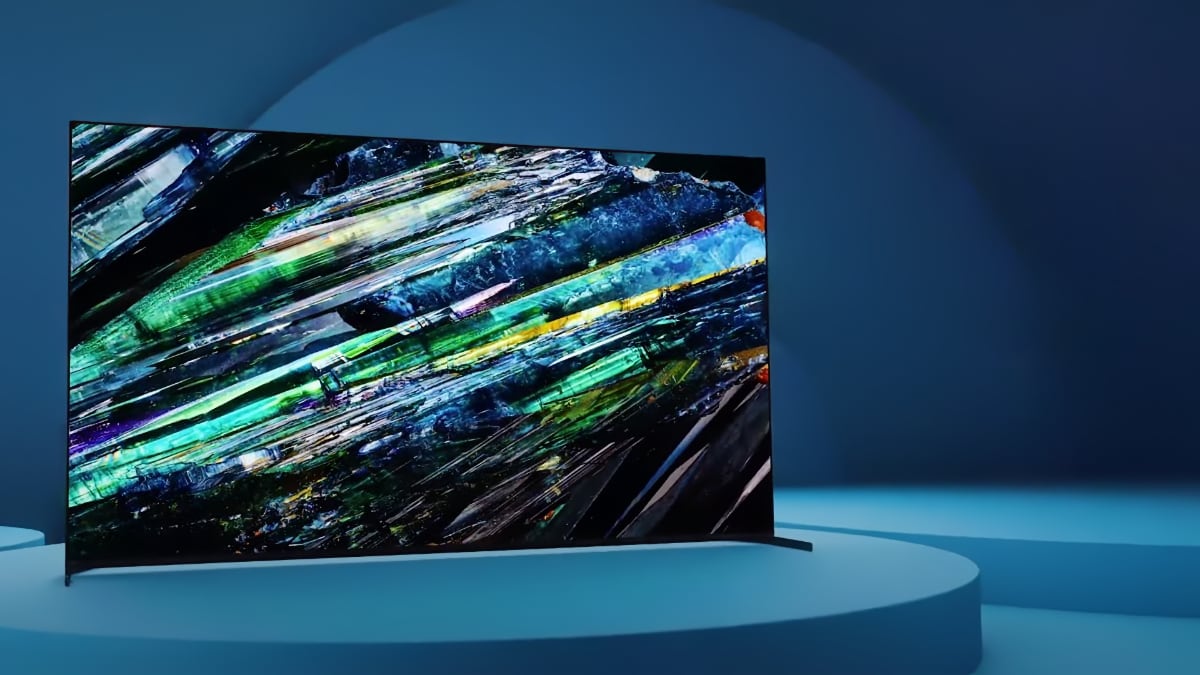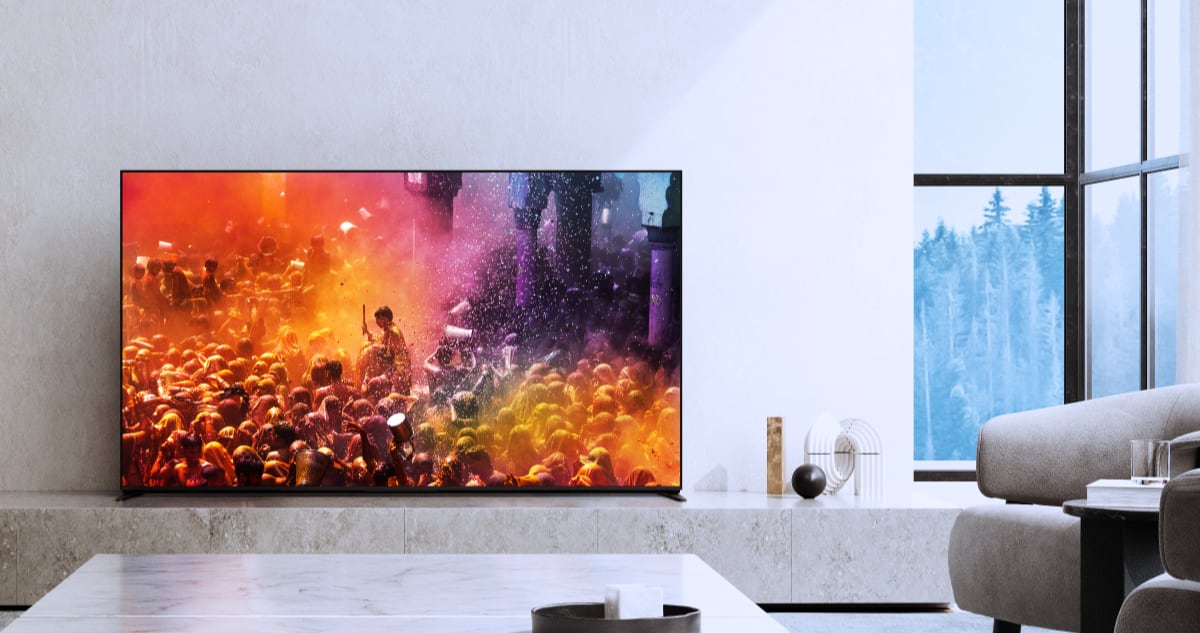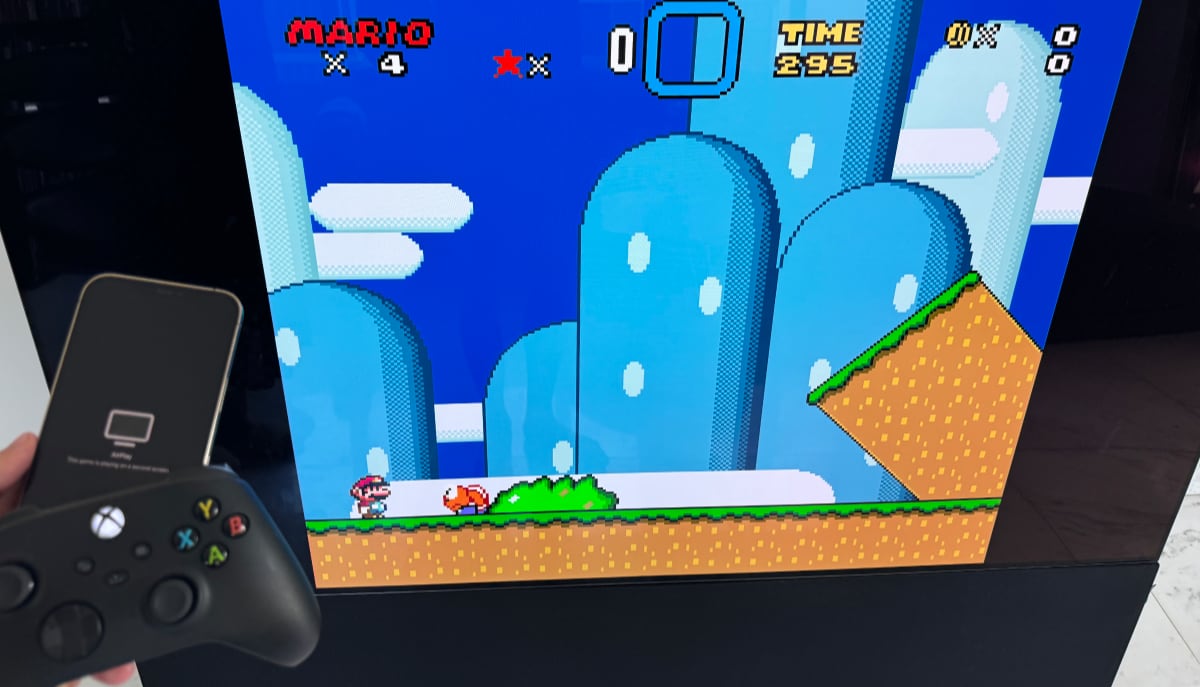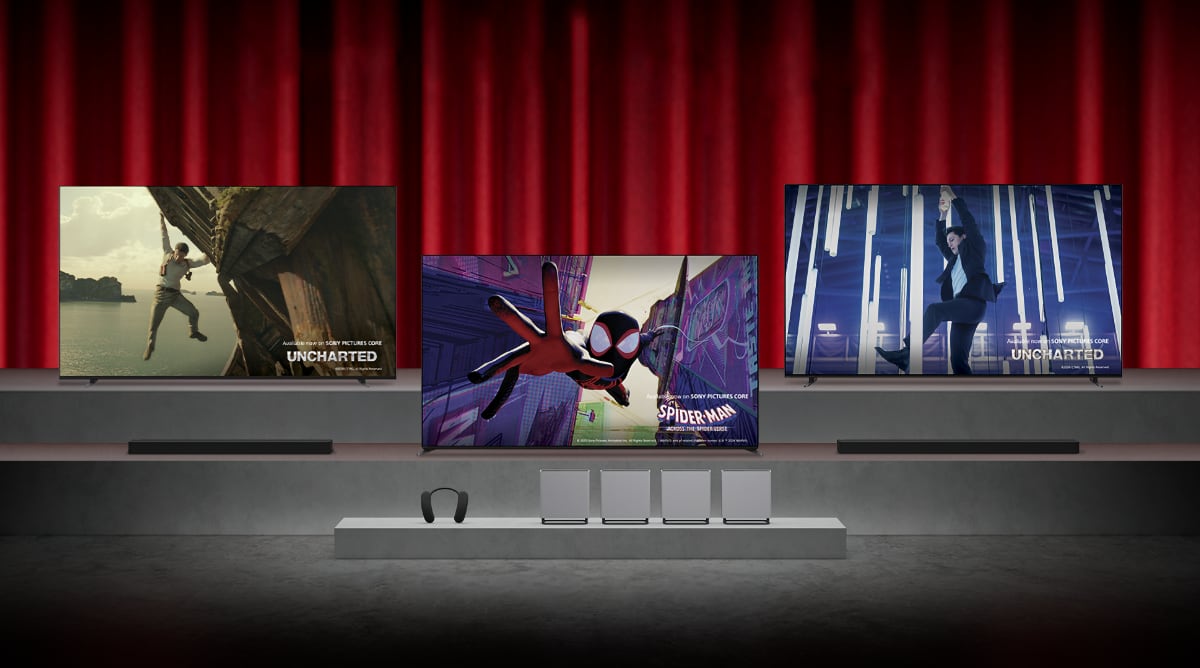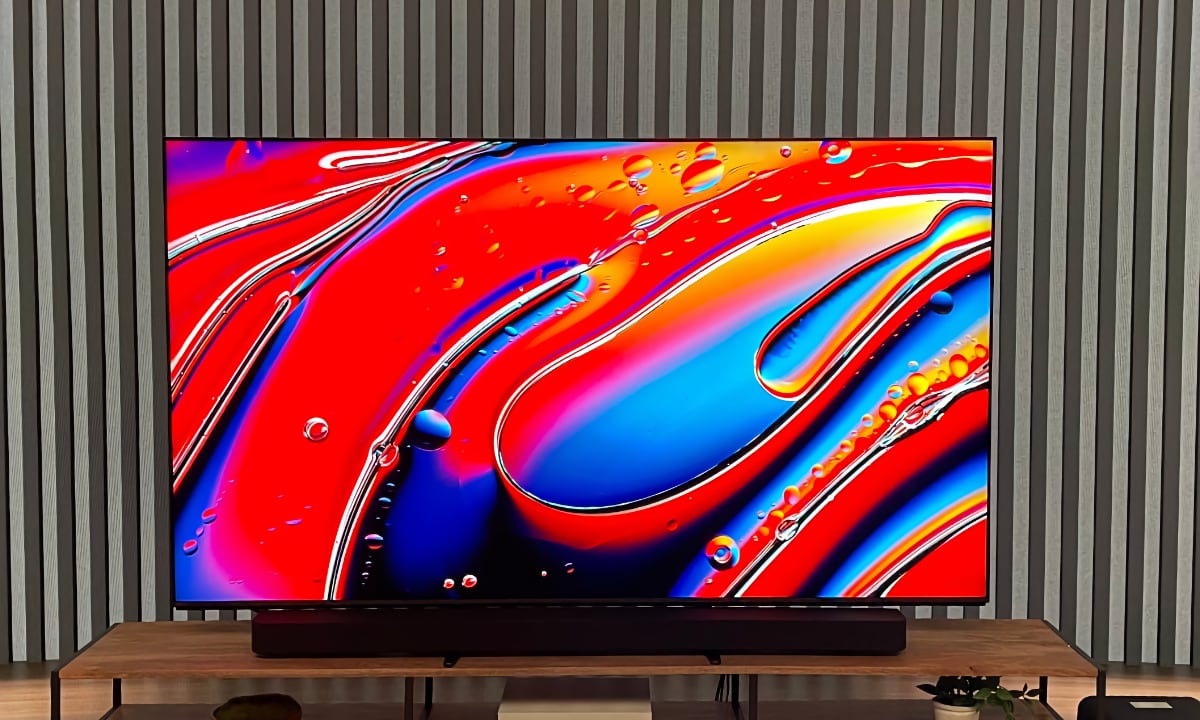Sony had invited the press to a technical deep dive into the 3D technology. Here we had a chance to sit down quietly and get some hands-on 3D experiences with some of the two most anticipated new TVs from Sony in 2010; HX900 and LX900. Here you can read our initial experiences with the two high-end TVs, before we review these two later this year.
More about the entire Sony 2010 line-up here:
Sony 2010 Bravia line-up - with prices
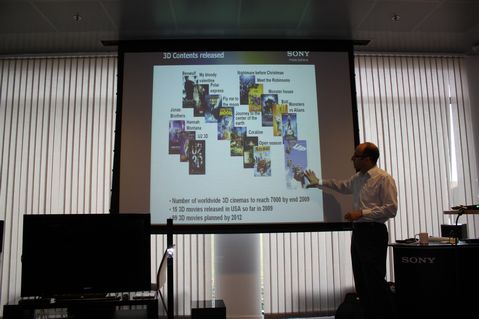
Sony 3DTV
Hands-on with Sony's 3DTVs
On the press conference Sony had brought the LX900 and HX900 ranges. LX900 is the flagship model in the Signature range and HX900 is the flagship model in the Cinematic range. Both models are 3DTVs and will be available from summer 2010.
We arrived early - and stayed late - in order to get some solied hands on experience with both models. Sony used a PlayStation 3 Slim for 3D playback btw.
Sony said that the LX900 was an early prototype and that the actual product might differ a bit but the HX900 should be the final model.
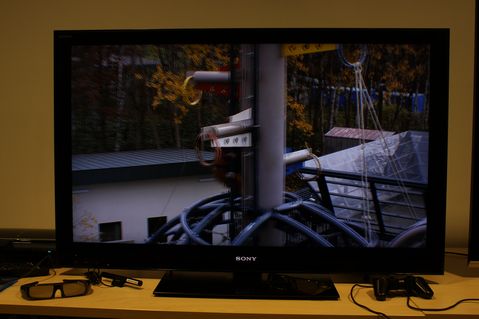
Sony 3DTV HX900
So, what can us consumers expect from 3DTVs? Will a new 3D world unfold before our eyes where objects are flying around in the open? Or how should you actually prepare for this? My guess is that your initial impressions with the 3DTVs will depend largely on your expectations.
3D is mostly about depth into the picture. You can see objects that step out of the panel and these might be used in the gaming world but the 3D effect is not something fancy with objects flying around you. It's not a virtual reality world. The 3D effect is very similar to the one you saw on Avatar 3D in the cinemas with a lot of depth into the picture.

Sony 3DTV LX900
However, you can expect more from the flat panel TVs in regards to 3D. Most cinemas use the passive 3D system with polarized glasses and flat panel TVs use the active system with active 3D shutter glasses. Also, there are some technical factors that should make the flat panel 3D technology better - especially for motion.
But let us take a step into the new 3D world and take a closer look.
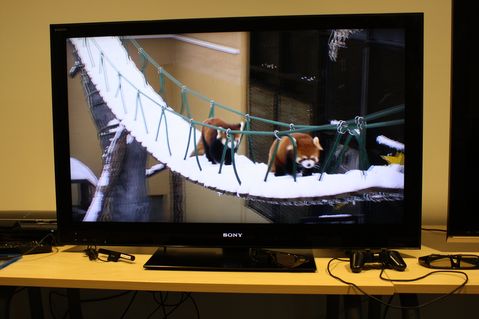
Sony 3DTV HX900
One of the first impressions was that the 3D effect is enhanced with larger TVs. Sony had brought a 46-inch HX900 and a 52-inch LX900 and I felt that both TVs could easily have been much larger. The size of the TV does not only enhance the 3D effect but also ensures that you actually perceives the perspective and that you feel that the horizon in some 3D images is actually in the horizon.
But I also noticed that I placed myself closer to the TV without thinking about it. What you want is to eliminate the distracting objects from the surroundings in order to really immerse yourself into the 3D experience.

Sony 3DTV
Sony turned on the HX900 that has a LCD panel with a LED local dimming backlight which also means that it has very deep black levels (because of local dimming), and this actually has a significant effect on the 3D effect in my opinion. Black creates depth in pictures even with 2D TVs and is therefore also an important element on 3DTVs.
HX900 handled most motion well and it's faster than most LCD-TVs today. This is also very important in order to get a good 3D experience (as well as 2D experience) and I felt that 3D motion was much better than in the cinemas with slower projectors. The 3D effect from the 3D content was mostly about 3D depth into the picture but the picture also looked good and realistic

Sony 3DTV HX900
3D works very well with games and animated movies. Here we experienced amazing depth. The game Wipeout was impressive and actually gave a completely new gaming experience. I have played Little Big Planet before and in the 3D version that Sony demonstrated the 3D effect also contributed to a new experience even though the game is not the one best suited for 3D images.
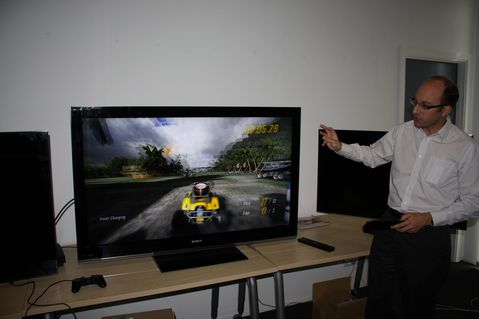
Sony 3DTV LX900
Afterwards we had a chance to play with the 52-inch LX900 and I have to say that this model was not nearly as good as HX900. Sony did say that LX900 was an early prototype but the LX900 had more noise and more crosstalking (left and right images for each eye overlapping). This also meant that the 3D effect was less convincing.
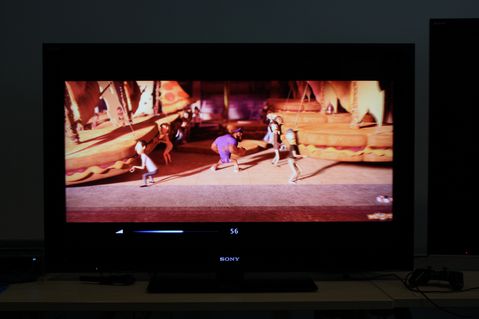
Sony 3DTV HX900
Again I felt that black levels was important. LX900 has no local dimming and this also means that 3D depth was affected - especially in dark movies scenes. Black was not as low on the LX900 as on the HX900 and reduces 3D depth making black levels even more important on 3DTVs.
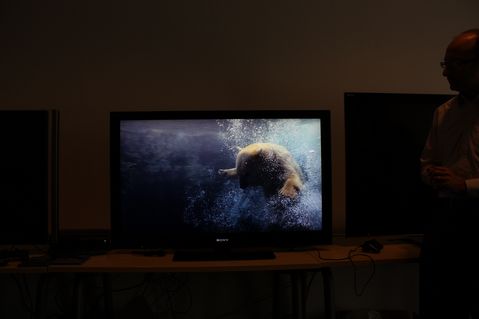
Sony 3DTV HX900
The 3D effects are also better when you're watching in dark rooms. Too much light is annoying and reduces 3D depth. Light also enters the glasses from and sometimes you might experience some flickering from the glasses if you have a heavy fluorescent lamp standing around og hanging from the roof.
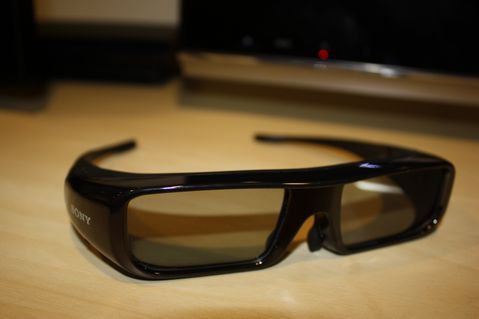
Sony 3D briller
The 3D glasses from Sony was comfortable and most people at the demonstration agreed. The glasses are screened from the top to ensure that no light enters. Sony also plans to introduce smaller glasses for children or people with small heads.
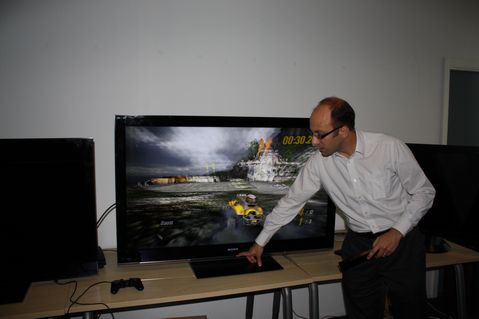
Sony 3DTV LX900
I tried to play a bit with the glasses and found that the glasses are not working if you tilt your head. The 3D glasses have polarisators built into them and this means that if you tilt your head at a 25-35 degree angle the 3D effect is gone.
This is a LCD problem. With plasma TVs this will not happen and you can use the glasses lying on the couch.

Sony 3DTV LX900
Also, you cannot use 3D glasses from other manufacturers. The 3D glasses need to communicate with the 3DTV via infrared signals, like remote controls, and these infrared signals are pairred with the TV.
You can, on the other hand, use all 3D Blu-ray players from any manufacturer. Also, Sony confirmed that all PlayStation 3 models will be updated to support 3D.
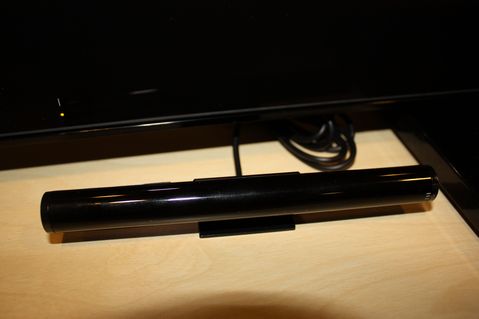
Sony 3D infrared sender
The glasses are expected to cost around 120 Euro.
That's all folks. Be sure to check back in soon again where we have Sony TV reviews online together with 3DTV reviews from all manufacturers. remember to subscribe to our Newsletter or our RSS feeds.
More about the entire Sony 2010 line-up here:
Sony 2010 Bravia line-up - with prices.
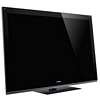 Hands-on with 3D Sony HX900 and LX900
Hands-on with 3D Sony HX900 and LX900


